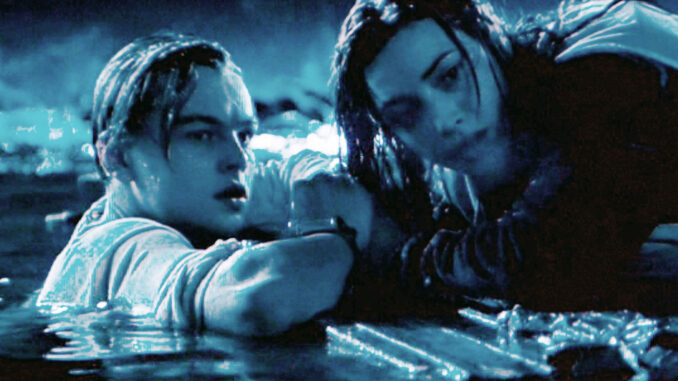
The Door, The Lies, and the Legacy: Examining Kate Winslet's Shifting Titanic Narrative
The image is seared into popular consciousness: Rose DeWitt Bukater, clinging desperately to a floating door in the frigid Atlantic, while Jack Dawson, submerged in the inky depths, stares up at her, a grim acceptance etched on his face. For decades, this scene has been the subject of debate, the focal point of countless discussions about physics, buoyancy, and the viability of two people sharing that fateful piece of debris. And for decades, Kate Winslet, Rose herself, has staunchly defended the necessity of Jack’s demise. But now, a seismic shift. Headlines scream: "Kate Winslet Drops Shocking Titanic Secret That Changes the Door Scene Forever!" The internet erupts. Is this the final nail in the coffin for the already highly scrutinized death of Jack Dawson? Is Winslet finally admitting what everyone already knew: there was room for two?
The initial reaction to such a proclamation is one of weary skepticism. The "door debate" has been thoroughly exhausted, dissected, and reassembled like a salvaged shipwreck. We've seen the diagrams, the calculations, the recreations. We know the science. We know James Cameron's artistic license. So, what shocking secret could Winslet possibly reveal now?
Perhaps the "secret" isn't a newfound understanding of buoyancy. Perhaps it's a more nuanced admission, a deeper exploration of Rose's internal landscape in those moments of agonizing survival. Maybe Winslet is acknowledging that the door, beyond being a physical object, represents the emotional space Rose created for herself, a sanctuary built on the devastating foundation of Jack's sacrifice. Maybe she’s admitting that Rose's clinging to the door, literal or figurative, was less about physical impossibility and more about the psychological necessity of survival.
Think about it. Rose, a young woman trapped in a gilded cage of societal expectations, finds freedom and genuine connection with Jack. Their love is fleeting, intense, and ultimately stolen by the icy grip of the ocean. Witnessing his death, knowing that she might have been able to share that precarious piece of wood, would undoubtedly trigger a profound sense of guilt and self-preservation.
Winslet's revelation, whatever its precise nature, likely touches on this complex emotional reality. Perhaps she's acknowledging the inherent selfishness, the understandable yet painful drive to survive that fueled Rose's actions. Maybe she's suggesting that Rose, in her trauma, unconsciously convinced herself there wasn't enough room, a self-serving lie that allowed her to live with the burden of Jack's death.
The true "shocking secret" might not be about the physical capacity of the door, but the emotional capacity of Rose. It's a revelation about the human condition, about the desperate lengths we go to in order to cope with trauma and survive loss. It's about acknowledging that even in acts of supposed selflessness, like Jack's final act of love, there are often undercurrents of self-preservation and unavoidable guilt.
Furthermore, this hypothetical revelation could be seen as a commentary on the very nature of storytelling and memory. The "truth" of that night on the Titanic is subjective, filtered through Rose's perspective, shaped by her grief and the decades that followed. Winslet's "secret" could be a nod to the unreliability of memory, the way our recollections are constantly being reshaped by our experiences and our desire to make sense of the past.
In conclusion, the imagined headline, "Kate Winslet Drops Shocking Titanic Secret That Changes the Door Scene Forever," is more than just clickbait. It’s a potent reminder that the Titanic's enduring appeal lies not just in the spectacle of the disaster, but in the enduring questions it raises about love, loss, survival, and the complexities of the human heart. Whether Winslet reveals a technicality about the door's buoyancy or delves into the psychological depths of Rose's experience, the conversation will undoubtedly continue, cementing the door scene as a timeless symbol of sacrifice, survival, and the enduring power of a story that continues to captivate audiences, even decades later. The "secret," then, is not just about the door, but about the enduring power of a narrative that continues to challenge us to question our own understanding of love, loss, and the choices we make in the face of unimaginable tragedy.
